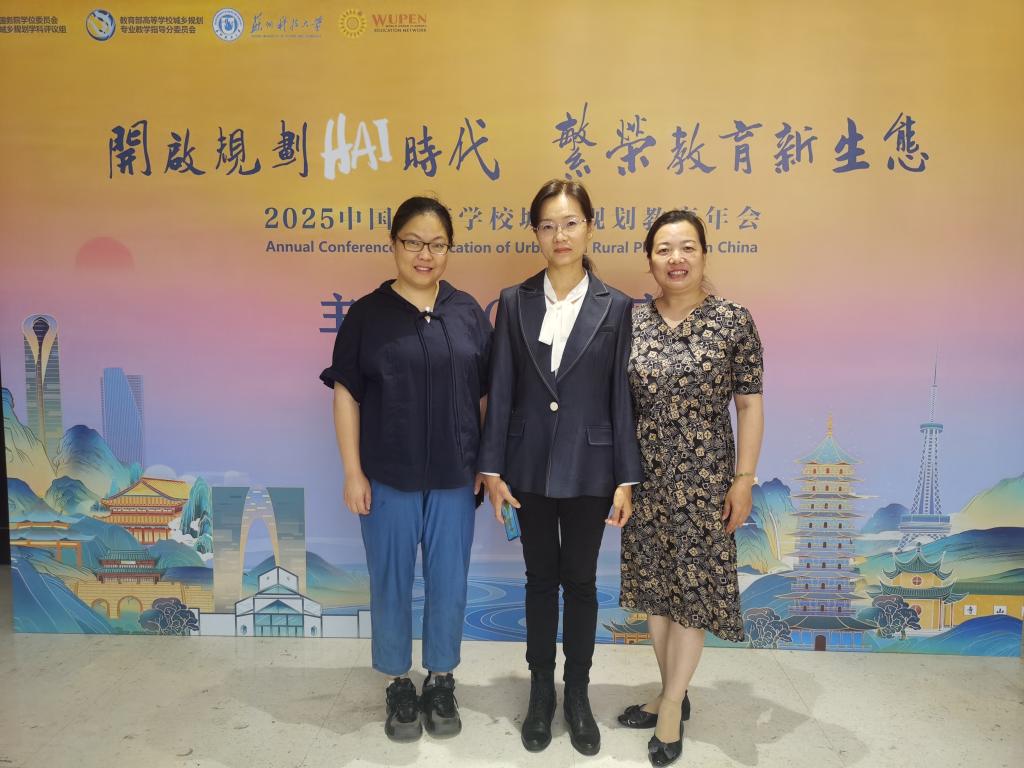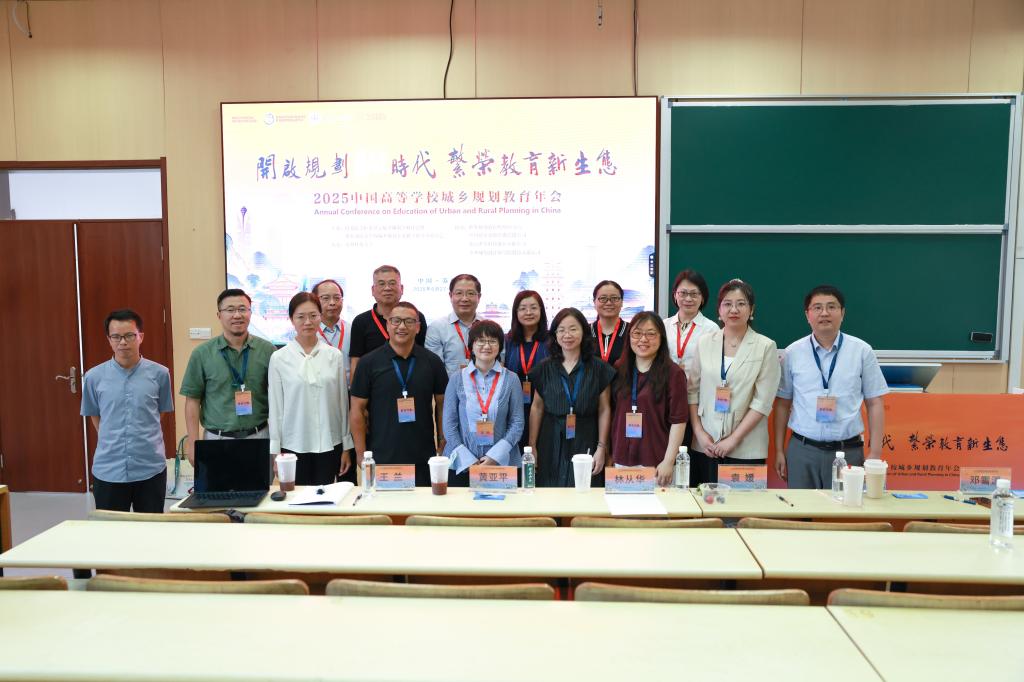Recently, the 2025 Annual National Conference on Urban and Rural Planning Education was held in Suzhou. Three faculty members from the School of Urban Construction (SUC) at Beijing City University (BCU)—Ma Jing, Liu Aihua, and Deng Xiaoying—were invited to attend the conference.

At the foundational education sub-forum, Deng Xiaoying delivered a report titled "Research on the Application of Low-Technical-Barrier AI Tools in Foundational Urban and Rural Planning Education," introducing the teaching model of "low-barrier AI tools + fundamental skills" adopted in her "Design Practice II" course.

During the conference's paper awards ceremony, two papers were honored with the "Outstanding Teaching Research Paper" award. These were the paper by Deng Xiaoying's team, "Research on the Application of Low-Technical-Barrier AI Tools in Foundational Urban and Rural Planning Education—A Practical Path Based on Student Cognition," and the paper by Ma Jing's team, "Mutual Empowerment · Five-Dimensional Symbiosis: Construction and Practice of Teacher-Student Co-Creation Teaching Theory in Design Courses in the HAI Era."

The conference was jointly organized by the Urban and Rural Planning Discipline Appraisal Group of the State Council Academic Degrees Committee and the Urban and Rural Planning Teaching Guidance Sub-Committee of the Ministry of Education. Under the theme "Embracing the HAI Era in Planning, Fostering a New Ecology for Education," the event featured four main segments: keynote reports, thematic forums, teaching achievement exhibitions, and urban-rural field studies. The thematic forums covered topics including discipline and program development, foundational education, theoretical teaching, practical teaching, and education on urban renewal and conservation. The professional contributions and award-winning papers by BCU faculty demonstrated the high-level exploratory achievements of the School of Urban Construction in the field of urban and rural planning education, providing valuable case studies for promoting the deep integration of planning education with cutting-edge technology and for advancing the reform of urban and rural planning pedagogy.
